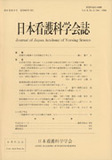Japanese
English
- 販売していません
- Abstract 文献概要
- 参考文献 Reference
要旨
本研究は練習頻度を違えた場合の心マッサージの練習効果とその持続性を,圧迫力と肘角度からみた.被験者は1回/週を1ケ月(M群),1回/日を4日(W群),1日4回(D群)を練習した3群各5名の看護学生である.練習は1回1分間で,圧迫力と肘角度は40kg,0度を目標とし,練習前,練習直後,練習期終了1ケ月後,6ケ月後に測定した.
結果は次の通りである.M・W・D群の練習前の圧迫力は三者間の有意差はなかった.練習直後は3群共に練習前に比べ有意に増加して,目標値に近づき練習効果があった.練習期終了後は,M群が6ケ月後も目標値に近かったが,W群は6ケ月後に,D群は1ケ月後には練習前の値にもどり,M群のみ効果が持続した.一方肘角度は3群共に練習前の三者間の有意差はなく,練習直後,練習期終了6ケ月後とも有意に伸展した.以上のことから心マッサージは,有効な圧迫力の発揮という点を考慮すると,分散的な練習方法が効果的である傾向を示した.
Abstract
The purpose of this study was to find the most effective frequency of the practice session in the closed chest cardiac massage. Fifteen healthy nurse-school female students were randomly devided into three different experimental groups (n=5). The first group (M-g) practiced once a week for one month. The second group (W-g) exercised one practice session per day for four days, and the third group (D-g) four practice sessions in one day. Each practice session consisted of one minute of intensive training under the supervision of the present investigators. The thorax compression force was measured using a force measurement device attatched to a cardiac massage dummy (the Leardal's Recording Resuci Anne), and the angle of elbow was also measured by means of an electro-goniometer system. The measurement was done before and after each practice session, and one month and 6 months after the final practice session. During each practice session each subject was instructed that an ideal magnitude of the force was 40kg, and the elbows were straightened (0 degree) throughout the compression phases.
It was found that the compression forces before the first practice session were 34.9±1.22kg, 35.3±2.24kg, and 34.9±3.39kg for M-g,W-g, and D-g, respectively. There were no significant differences in these mean values of three groups. The compression force after the four practice sessions for each group was significantly larger than its corresponding initial mean value. The M-g had 42.1±0.97kg, and the W-g and D-g had 39.5±1.05kg and 39.5±0.20kg, respectively. It was noted that these values were similar to the ideal force of 40kg, suggesting that each training method was equally effective.However, there were significant differences in the compression forces when measured 6 months after the final practice session. The W-g and D-g had an apparent decrimental effect in the compression force, and the greatest change was seen in D-g. There were no significant changes in the elbow angle due to the effects of time. These results suggested that lessons of the cardiac massage should be spaced over a relatively longer period of time.
Copyright © 1986, Japan Academy of Nursing Science. All rights reserved.


